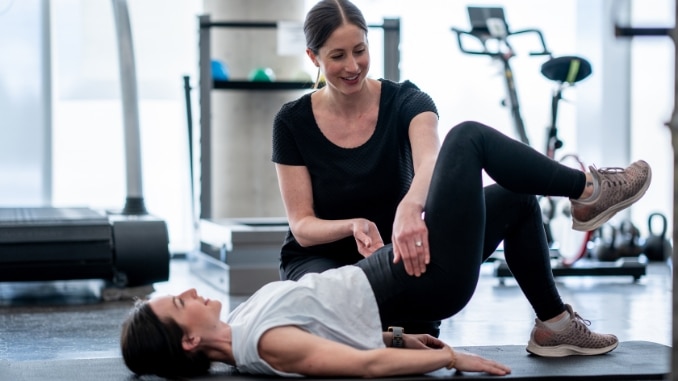Anterior pelvic tilt (APT) is more than just a postural issue—it can lead to hip, back, and joint pain, especially for those with sedentary lifestyles or intense athletic routines. Excessive anterior pelvic tilt can exacerbate these symptoms, making it crucial to address the condition promptly.
This condition occurs when the pelvis tilts forward, causing an arch in the lower back. But with the right stretches and strengthening techniques, you can counteract this imbalance and improve your posture.
Understanding Anterior Pelvic Tilt
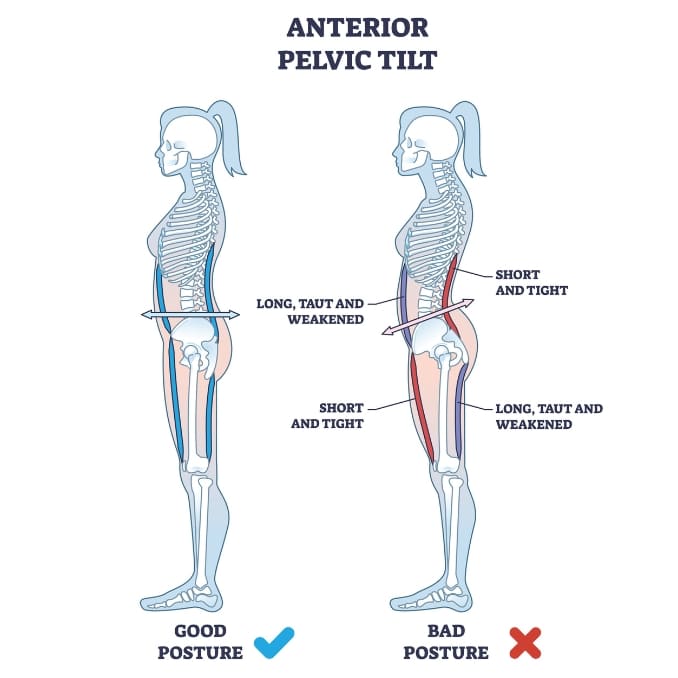
Anterior pelvic tilt is a common postural condition that affects the alignment of the pelvis and spine. It occurs when the pelvis tilts forward, creating an exaggerated curve in the lower back.
This condition often results from a discrepancy between the length and strength of the hip flexors and abdominal muscles. Prolonged sitting, poor posture, weak core muscles, tight hamstrings, and genetic predispositions can all contribute to the development of anterior pelvic tilt.
When you sit for extended periods, your hip flexors become tight, and your glutes weaken. This imbalance pulls the pelvis forward, leading to discomfort and pain in the lower back, hips, and knees. Understanding the root causes of anterior pelvic tilt is the first step toward correcting it and improving your overall posture.
Why Sitting Too Much Is Seriously Bad for Your Health?
A sedentary lifestyle can harm your health by increasing the risk of developing insulin resistance, diabetes, and cardiovascular disease. There are many benefits of living an active life including increased energy levels and weight loss as well as improved moods which will lead to a better quality of life.
A sedentary lifestyle is not healthy for you at all!
Long periods of sitting with several health concerns. They include obesity and a cluster of conditions – increased blood pressure, high blood sugar, excess body fat around the waist, and abnormal cholesterol levels that make up metabolic syndrome. Prolonged periods too much sitting overall seems to increase the risk of death from cardiovascular disease or cancer.
What Causes Anterior Pelvic Tilt?

Research links prolonged sitting, weak core muscles, and tight hip flexors [1] as primary contributors to APT. Studies highlight that sedentary behavior leads to poor posture, increasing risks of musculoskeletal problems.
Clinicians use the anterior superior iliac spine (ASIS) to assess pelvic tilt by drawing an imaginary line from the ASIS to the posterior superior iliac spine (PSIS) to determine pelvic alignment issues.
5 Ways to Fix Anterior Pelvic Tilt and Tight Hip Flexors
Anterior pelvic tilt and tight hip flexors are common problems in athletes, dancers, runners, weight lifters. These can lead to pain and chronic injuries such as a runner’s knee or back injury. The following exercises will help you strengthen your hips to prevent these conditions from reoccurring:
1. Encourage yourself not to always sit
Sitting is not all bad as long as you do it correctly. The hip flexors are the muscles that cross both sides of your pelvic floor and support your hips in sitting and standing postures.
They get tight if a person spends too much time on their butt with no counter pressure placed below them, which usually happens when people sit for extended periods of time with poor posture or have been sedentary for an extended period before they started to engage in exercise again after a break from physical activity.
2. Stretch out
Hips are complex joint that moves in many directions. Stretching these muscles helps to maintain their flexibility and prevent injuries while working out.
This can be done through stretching, using an exercise ball during activity, or by sitting on the floor with your legs spread wide apart for stability purposes before moving into different positions of standing up straight again.
3. Take a break every 30 minutes

Over time, the hip flexor can become tight from constantly taking on tasks that stress your body. It is important to take a break in order for it to recuperate and stop tightening up. When sitting at a desk all day long, you might be tempted to keep moving around throughout the workday.
But this will not help loosen up your muscles over time. Instead of standing or walking briskly when doing so becomes difficult as well as if necessary while working on something else (as of typing). Try stretching out one leg completely straight with no weight bearing down onto it before picking back up again afterward.
4. Exercise your muscle
Strengthening your deep hip muscles will be beneficial for both the physical and mental aspects of life. Even if you’re not an athlete, there are plenty of ways to strengthen these important parts of you as well as prevent injuries from coming up in daily routines or sports like basketball or football that challenge your body with intense movements throughout different planes of motion.
5. Foam Roller
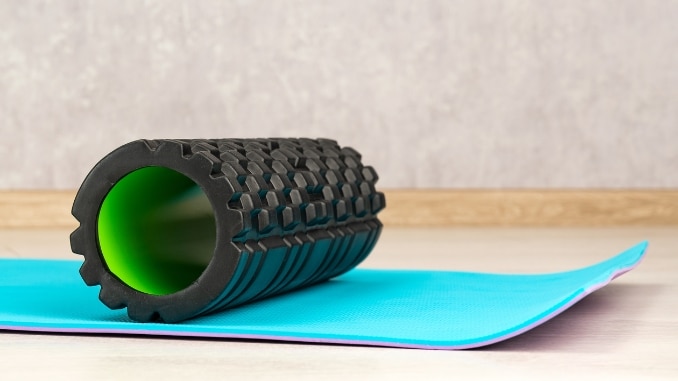
The anterior pelvic tilt foam roller is a self-massaging device that helps to rid the body of tight muscles and connective tissues for better overall flexibility.
My Personal Journey
I’ve struggled with APT myself. At first, the arch in my lower back felt like a minor inconvenience. But after implementing foam rolling, core strengthening, and regular stretching, I noticed a dramatic difference in my posture and mobility. The kneeling hip flexor stretch became my go-to after long days at a desk.
Why This Matters
Fixing anterior pelvic tilt isn’t just about aesthetics. Addressing it reduces pain, prevents injuries, and supports overall health. In contrast, posterior pelvic tilt can lead to lower back pain and muscle imbalances.
Maintaining a balanced posture by addressing both anterior and posterior pelvic tilt is crucial for overall well-being. Whether you’re an athlete or someone recovering from years of poor posture, these simple adjustments can make a world of difference.
Strengthening and Movement Tips
Stretching alone isn’t enough. Anterior pelvic tilt exercises are crucial for improving posture, strengthening the core, and enhancing flexibility. Strengthening the core and gluteal muscles ensures lasting improvements.
- Core Engagement: Planks and pelvic tilts on the floor are excellent for activating the deep core muscles that stabilize the pelvis.
- Glute Activation: Bridge exercises target weak glutes, which often contribute to the forward pull of the pelvis.
- Movement Breaks: Avoid prolonged sitting. Experts recommend standing or stretching every 30 minutes to reduce strain on the hip flexors.
Common Mistakes to Avoid

When attempting to correct anterior pelvic tilt, it’s crucial to avoid common mistakes that can hinder your progress. One of the most frequent errors is neglecting the underlying muscle imbalances. Focusing solely on stretching without strengthening the weak muscles can exacerbate the condition and potentially cause more harm.
Another mistake is failing to incorporate exercises that target the core muscles, glutes, and hamstrings. These muscle groups play a vital role in maintaining proper posture and alignment. Without addressing them, you may struggle to achieve lasting improvements.
To correct anterior pelvic tilt effectively, ensure your routine includes a balanced approach that strengthens and stretches the necessary muscles.
Hip Flexor for Anterior Pelvic Tilt
Exercises
1. Foam Rolling Out the Back
- For this anterior pelvic tilt exercise, begin by having the foam roller up against the wall and leaning against your pelvis area.
- Bring the legs out to increase resistance.
- Run the foam roller on your lower back area and, ideally, go into a 90-degree squat position.
- Raise back up and repeat the movement.
- Start off with one set of 4 repetitions on each side.
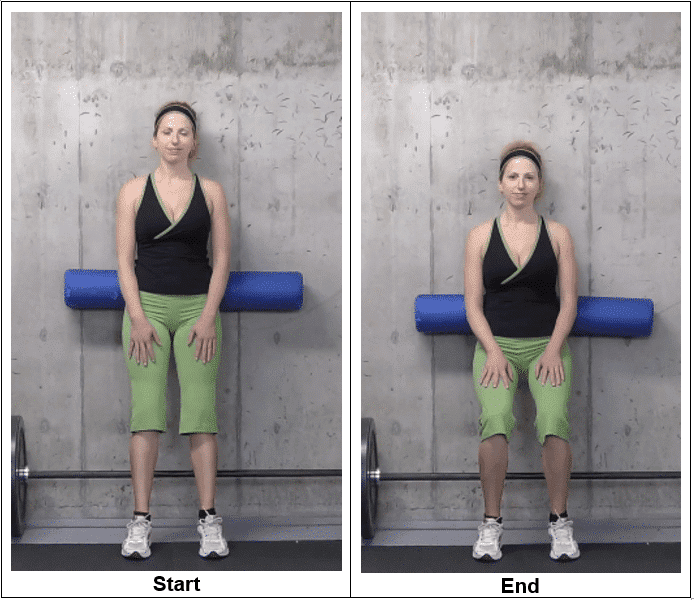
Perform the exercise in a smooth, controlled movement with a quick stop at the end position.
The intensity is light. The purpose of this exercise is to self-massage the muscles in the pelvis and low back area.
2. Foam Rolling for Hip Flexors
- Move over on your stomach, then go up onto your hands.
- Prop yourself up on your toes, keeping a straight line with your ankles, hips, and shoulders.
- Position the anterior pelvic tilt foam roller just above the pelvis area, then roll through the hip area, targeting the front of the hip and the hip flexors.
- Return back to the starting position and repeat the movement on the opposite leg.
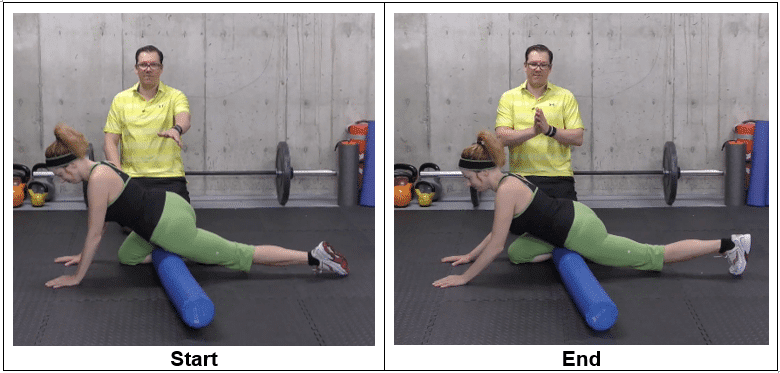
Start off with one set of 4 repetitions on both directions. Perform the exercise in a smooth, controlled movement with a quick stop at the end position. The intensity is light. The purpose of this exercise is to loosen up the muscles in the anterior part of the hip to loosen up the pelvis so it moves more freely.
3. Kneeling Hip Flexor Stretch
- Begin in an upright standing position then take a big step forward with your left leg.
- Bring the back knee all the way down to the floor.
- Tighten the abdominal area and bring the hips forward to feel the stretch in front of the hip.
- Return to the starting position and repeat the movement on the opposite leg.
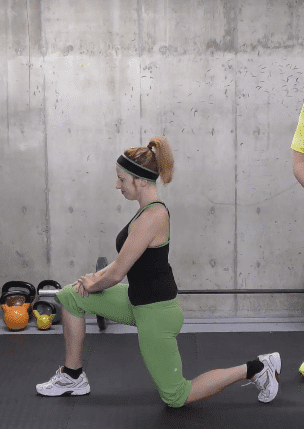
Start off with one set of 2 repetitions in both directions. Perform the exercise in a smooth, controlled movement with a good stop at the end position, ideally holding the position for 10 seconds. The intensity is light. The purpose of this exercise is to focus on stretching the muscles in front of the hip.
4. Posture Pelvic Tilt Against a Wall
- Begin in an upright standing position and leaning your back against the wall.
- Place both hands on your side and step further away from the wall for added resistance.
- Tilt your pelvis back.
- Return to the starting position by relaxing the pelvis and repeat the movement.
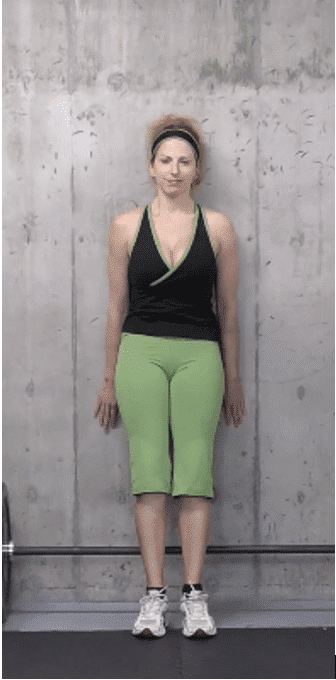
Start off with one set of 4 repetitions in both directions. Perform the exercise in a smooth, controlled movement with a good stop at the end position. The intensity is light. The purpose of this exercise is to counteract the anterior pelvic tilt.
Stretches:
1. Glute Bridge
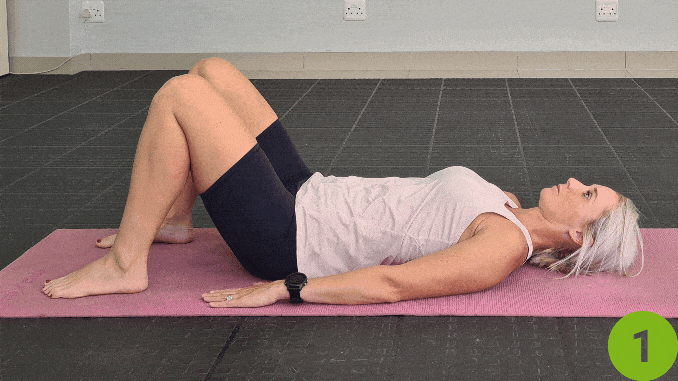
- For this stretches for anterior pelvic tilt, tie on your back on the floor with your knees bent and your feet flat on the floor, relaxing your upper body. Place your arms at your side.
- Contract your abdominal area, then push from your heels to lift your hips.
- Maintain good alignment with your head, shoulders, hips, and knees.
- Hold this position for several deep belly breaths, in through your nose and out through your mouth.
- Relax and return to the starting position.
2. Plank
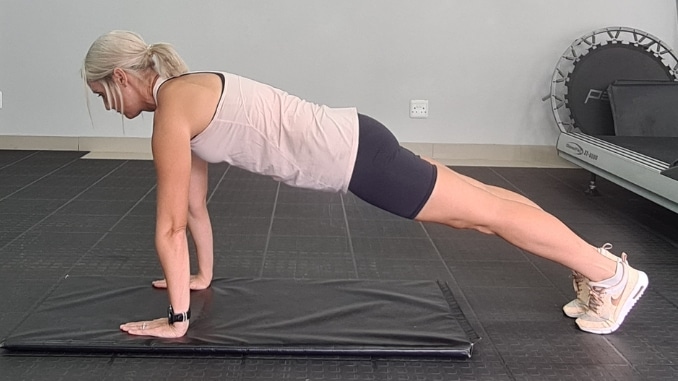
- Begin in a full arm plank position on the floor with your arms beneath your shoulders, maintaining good alignment with your head, shoulders and hips.
- Hold the position for several deep belly breaths, in through your nose and out through your mouth.
3. Seated Hamstring Stretch
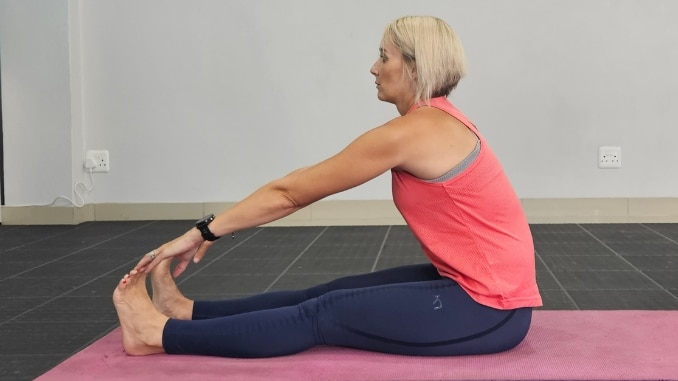
- For this stretches for anterior pelvic tilt, begin in an upright sitting position on the floor with your legs extended in front of you, maintaining good alignment with your head, shoulders, and hips.
- Engage your core and extend your arms to reach for your toes to stretch the hamstring while keeping your spine straight.
- Hold the position for several deep belly breaths, in through your nose and out through your mouth.
Why Is Stretching Not Enough to Address Back Pain?
To really prevent back pain, you must work on strengthening your lower and upper body muscles. That’s why it is important to stretch the right way.
Also, regularly exercising them by stretching each day in order to make them strong enough to support the weight of your upper body while you move about during daily activities.
It is also crucial that when possible you take a break from sitting for long periods of time every few hours by moving around often throughout the day even if this means standing up or stepping away occasionally as well doing other tasks at work too!
The more consistency we have with these things over an extended period-we will be rewarded with less risk for back pain!
Lifestyle Changes
- Regular Movement: Take breaks to stand and move throughout the day to avoid prolonged sitting.
- Good Posture: Maintain an upright posture while sitting and standing.
- Ergonomic Adjustments: Ensure your workstation supports good posture.
- Incorporate Activities: Engage in activities like yoga or Pilates that promote good posture and flexibility.
By combining these anterior pelvic tilt foam roller exercises, stretches, and lifestyle changes, you can correct anterior pelvic tilt [2] and improve your overall posture and alignment. Remember, consistency is key, and making these adjustments a regular part of your routine will yield the best results.
Beth Drayer, a physical therapist, emphasizes the importance of self-management. “By empowering individuals with the right techniques, like foam rolling and targeted stretching, they can maintain better posture and reduce pain independently,” she shares.
When You Should See a Healthcare Professional?
While stretches and foam roller for anterior pelvic tilt are effective, there are times when professional guidance is crucial. Persistent pain, difficulty performing basic movements, or concerns about structural issues may signal the need for help. If pain persists despite regular stretching, a professional evaluation can identify underlying issues and provide a tailored approach.”
Clinicians often use the posterior superior iliac spine (PSIS) in conjunction with the anterior superior iliac spine (ASIS) to visually analyze and measure the angle of pelvic tilt, which can indicate postural deficiencies and related health issues. For me, seeking advice clarified my approach and enhanced my results.
Conclusion
Anterior pelvic tilt doesn’t have to control your comfort or mobility. By incorporating these stretches, anterior pelvic tilt foam roller and lifestyle changes, you can regain alignment and reduce discomfort. Don’t hesitate to seek expert advice if needed—it’s an investment in your long-term health.
Ready to get started? Save this guide, try these stretches, and share your progress with others!
If you want to release your hip flexors instantly for more strength, better health and all-day energy, then check out the Unlock Your Hip Flexors Program now!
Frequently Asked Questions
Can stretching fix anterior pelvic tilt?
Stretching alone can help, but it’s most effective when combined with strengthening exercises for weak muscles and posture correction.
What muscles are weak with anterior pelvic tilt?
Typically, the weak muscles include the glutes, hamstrings, and core (especially the abdominal muscles).
How should I sleep to fix anterior pelvic tilt?
Sleep on your back with a pillow under your knees or on your side with a pillow between your knees to maintain spinal alignment.
What to avoid with anterior pelvic tilt?
Avoid prolonged sitting, excessive arching of the lower back, and exercises that overly strain the hip flexors.

